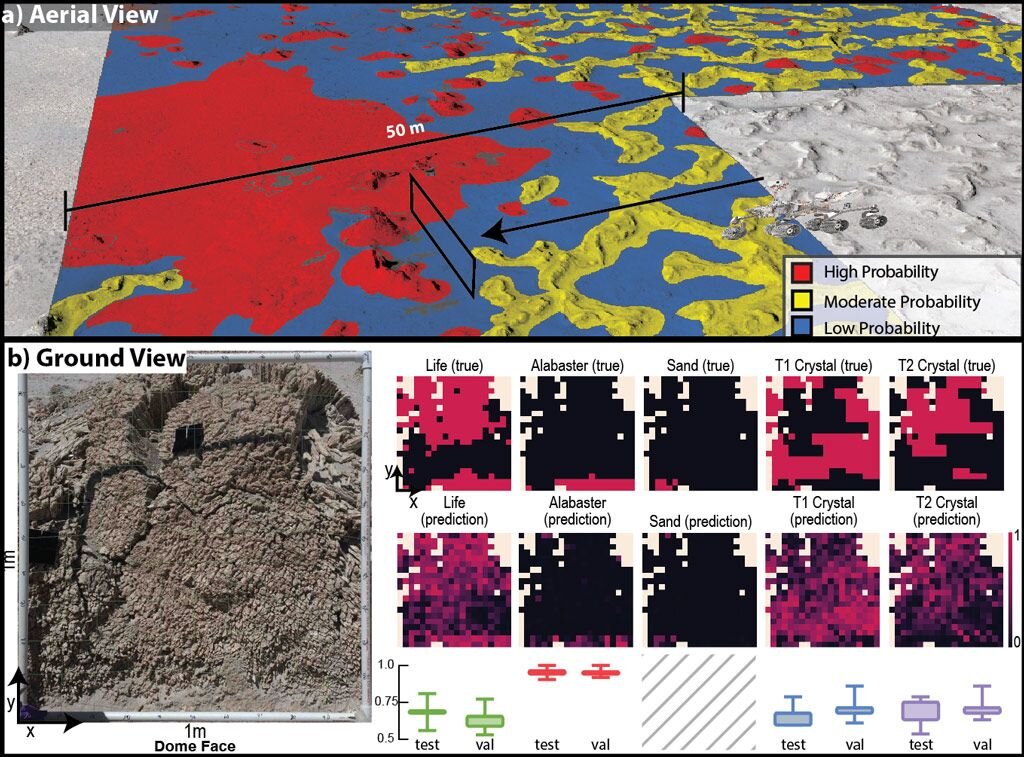There are plenty of places for life to hide. Even on our blue planet, where we know there is abundant life, it is sometimes difficult to predict all the different environments it might crop up in. Exploring worlds other than our own for life would make it exponentially more difficult to detect it because, realistically, we don’t really know what we’re looking for. But life will probably present itself with some sort of pattern. And there is one new technology that is exceptional at detecting patterns: machine learning. Researchers at the SETI Institute have started working on a machine-learning-based AI system that will do just that.
The training set is one of the essential requirements in any machine learning algorithm. So the researchers looked at the Salar de Pajonales near the Atacama Desert in Chile. This barren wasteland is very similar to the sun-scorched surface of Mars, with very high UV light penetration, very little water, and plenty of salt. But it’s still home to life as we know it.
So the researchers, led by Kim Warren-Rhodes, decided to start trying to differentiate locations where life existed in the area versus where it did not. To do so, they collected almost 8000 images of the site and took more than 1100 samples around the area they were imaging. Some of the images were taken by drone, and some were taken by satellite, but they meshed together cohesively enough to provide a total picture of the Salar de Pajonales.
Credit – SETI Institute
In those images, the researchers found a statistically distributed pattern that showed life was clumping together in certain areas rather than distributing itself evenly over the entire area. Unsurprisingly, these patches were directly related to the availability of water. But they also formed a pattern that can be fed into an algorithm.
Integrating the images used to feed that pattern recognition was challenging, but the team used integrations like those done with Perseverance’s different imaging systems as a baseline. After being trained on what to look for, the design, known as a convolutional neural network, detected biosignatures in areas not used for its training set with 87.5% accuracy. It also had the added advantage of decreasing the overall area needed for the search by 97%
Those are some impressive numbers, but they really only represent the types of dry, arid areas currently comprising the network’s data set. They can still be useful for things like directing a rover to a more attractive spot or pointing an orbiting Martian satellite to a promising site. However, there’s still a lot of work to be done before this system can confidently and consistently predict the existence of life in these patterns.

Credit – Warren-Rhodes et al.
Some of that work is already the next focal point of the SETI researchers – on their list of places to map are hot springs, permafrost soils, and rocks in Dry Valley. All of these additional locations contain some life on Earth, but it remains to be seen if the same can be said on other planets. But, as we begin to collect more data on potential biosignatures on places like Mars, Venus, and Enceladus, then this new SETI algorithm, or one of its successors, will likely play a key role in determining whether we actually found the holy grail of the search for alien life or not.
Learn More:
SETI Institute – Can artificial intelligence help find life on Mars or icy worlds?
Warren-Rhodes et al. – Orbit-to-ground framework to decode and predict biosignature patterns in terrestrial analogues
UT – More Data and Machine Learning has Kicked SETI Into High Gear
UT – Researchers Develop a new Framework for Searching for Biosignatures
Lead Image:
Probability maps of biosignatures in the Chilean desert.
Credit – Warren-Rhodes et al.

